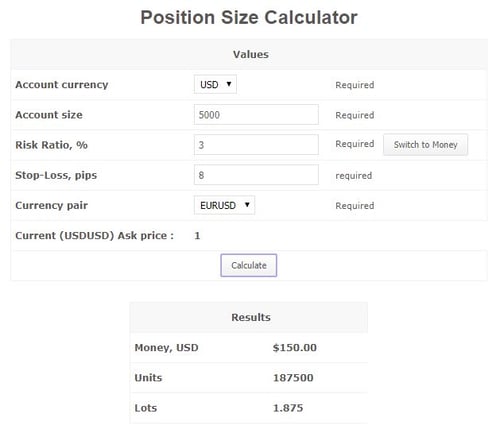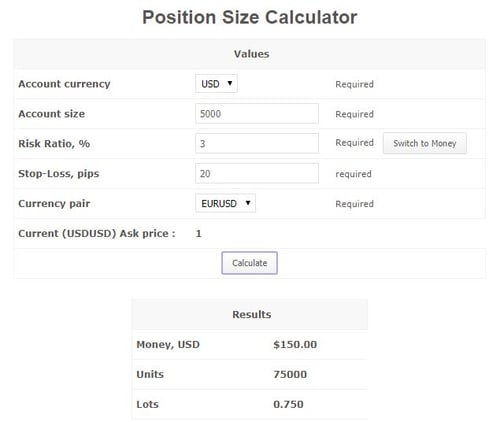Forex trading commissions eat up a painful slice of our Forex profit pie. In this article, I’ll share with you a little-known way to save on commissions and a trading tip to cover back your transaction costs.
What Are FX Trading Commissions and How Do They Work?
In any business that you go into, you’ve got certain costs: Rental costs, marketing costs, administrative costs, etc.
In the trading business, commissions are the transaction costs. We pay it to the broker and that's how the broker makes money.
How Do Brokers Charge Us for Their Services?
There are three kinds of brokers, but I divide them into two groups:
- Market Maker / STP Brokers
These brokers charge a mark-up on the market’s bid/ask spread —whatever the bid/ask spread is, they’ll quote you one or two pips higher.
For example, if the market is quoting at 1.2356, they’ll quote you at 1.2357. This one extra pip goes to the broker and that’s how they make money.
- ECN Brokers
These brokers charge a fixed commission. The lowest commission I’ve seen is the one I’m using which is Pepperstone. They charge $3.50 per lot. So for every one lot that I trade, they charge me $3.50 to buy and $3.50 to sell.
When you open and close a position (buy and sell), it’s known as a round trip. The total commission I pay per entry and exit per lot is $7.
Broker Differences: Spreads and Charges
Difference in Bid/Ask Spread
Let’s see what the bid/ask spread looks like for these two kinds of brokers.

In this example, on the right you can see the ECN broker’s spread on EURO/USD is 1.2444 / 1.2444. The bid and the ask prices are very close; less than one pip apart. The broker doesn’t mark up on the spread, so you can buy and sell at basically the same price.
On the left is a typical market maker broker. You can see the difference between the bid and ask prices; a spread of almost 4 to 5 pips. Rather than quote you the market price, these brokers mark you up by about 4 to 5 pips.
Difference in Charges
Imagine you want to go long on one lot of EUR/USD. You buy at 1.2434 and exit at 1.2454, making you 20 pips in profit:
20 pips x $10 x 1 lot = $200
But we have to factor in commissions. Let's look at how much the two kinds of brokers will charge you.
- Market Maker / STP Brokers
When you buy, they quote you 1.2435 (+1 pip), costing you $10 per lot. When you sell, they quote you 1.2453 (-1 pip), costing you $10 per lot. The total cost of your round trip is $20 per lot. Out of your $200 profit, $20 goes to the transaction costs, which is about 10% of your profits.If they were to mark up by more than one pip, your cost would be even higher.
- ECN Brokers
When you buy, you buy at 1.2434 (no mark-up). They charge you a fixed commission ($3.50 in the case of my broker).When you sell, you sell at 1.2454. Again, you pay a fixed commission of $3.50.The total cost of your round trip is $7 per lot, out of your $200 profit.
This is why I prefer to use an ECN broker.
Now, there are many traders out there who say, “I don’t like ECN because I have to pay a commission up-front.” But what they don't see is that market markers and STP brokers cost more due to the wider spread.
That said, I know that in some countries, you may not be able to get an ECN broker. If you have to use a market maker or STP broker, find one that puts on you a maximum mark-up of one to 1.5 pips.
How Your Position Size Impacts the Commission You Pay
Here’s another thing you need to know: How much commission you pay when you place a trade depends on the number of lots you trade or your position size.
The bigger your position size, the bigger the number of lots you trade, and the higher the commission you pay for that trade.
Now, what determines the number of lots you trade or your position size? It depends on how close your stop-loss is.
If you’ve read my article on position sizing, you’ll remember this formula:

Your stop-loss distance is the only thing you can really control on a trade-by-trade basis.
The smaller your stop-loss distance, the bigger the number of lots you trade, and the more commission you pay.
Examples
Let's look at how this plays out using a Forex position sizing calculator available online.

In this example, your account size is $5,000 and you are risking 3% per trade. Say, you’re trading EUR/USD and your stop-loss is 8 pips away.
Using the calculator, you know you’ll be trading 1.875 lots. So if you’re paying a commission of $7 per lot per round trip, that's $7 x 1.875 lots = $13.13 commission.
Now, what if in another trade, your stop-loss is 20 pips away?

Using the calculator, the number of lots you’ll trade is now 0.75. So $7 x 0.75 lots = $5.25 commission.
So you see, the tighter your stop-loss, the higher the commission you pay for a trade.
Should You Always Go for Wide Stop-Losses Then?
Now, you may be thinking, “If that’s the case, I’ll just put a wider stop-loss of 20 to 50 pips! Then I can pay less commission.”
That’s okay if you’re a position or swing trader. You are in the trade for a few days or a few months, so your stop-loss is usually further, like 30, 100 or 200 pips away.
When you’ve got such a wide stop-loss, the number of lots you trade would be less. So you worry less about transaction cost as it takes up a smaller percentage of your profit.
But what if you’re a day trader like me?
How to Deal with High Transaction Costs as a Forex Day Trader
Remember that when you are a day trader, you are getting in and out really fast. You’d like to take a few trades in a day (for me, I take up to 3 trades in a day).
When you take short-term day trades, your stop-loss has to be close so that your profit target can be reached fast.
For example, if I put a trade where my stop-loss is 100 pips away and my profit target is 150 pips, it’ll take me days or even weeks to reach my profit target. Because of this, I can’t place that many trades.
But if my stop-loss is 10 pips away and my profit target is 15 pips, I can take profit in about one or two hours. Thus, I can place more trades per day, which means I can make more pips per pip risked.
“But wouldn’t I have to pay more commissions?” you ask.
Yes, that’s true; when you place a tighter stop-loss, your cost of trading is higher. So let me share with you a little trick I use to cover these transaction costs.
Covering Transaction Costs by Tweaking Your Profit Target
In my Forex day trading strategy, I used to always aim for a profit target of 1.5R with a tight stop-loss of 8 to 10 pips.
But to cover the higher transaction costs, I want to make a bit more profit to make the trade worthwhile.
Recently, I found that targeting 1.6R is more profitable if my stop-loss is 8 to 9 pips away.
- If my stop-loss is 8 pips, my profit target is 8 x 1.6 = 12.8 pips
- If my stop-loss is 9 pips, my profit target is 9 x 1.6 = 14.4 pips
But if my stop-loss is 10 pips or more, then I’ll stick to a 1.5R profit target, because the fixed commission as a percentage of my profit is much lower.
Want to learn how I make consistent profits with my Forex day trading strategies? Check out my Forex trading course, Pip Fisher™.



submit your comment